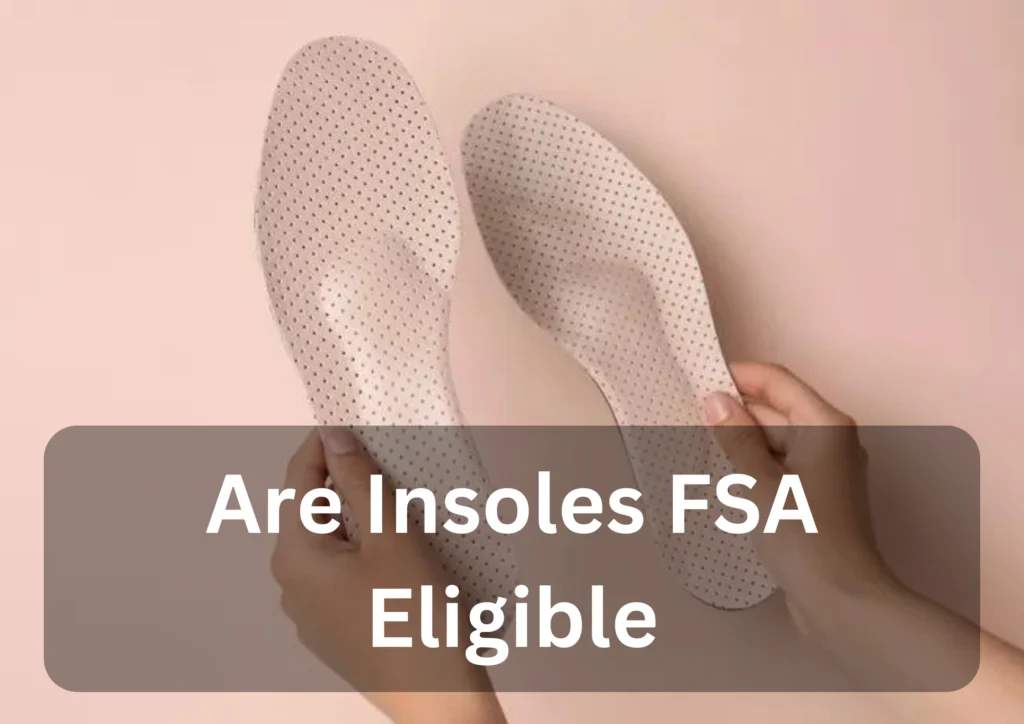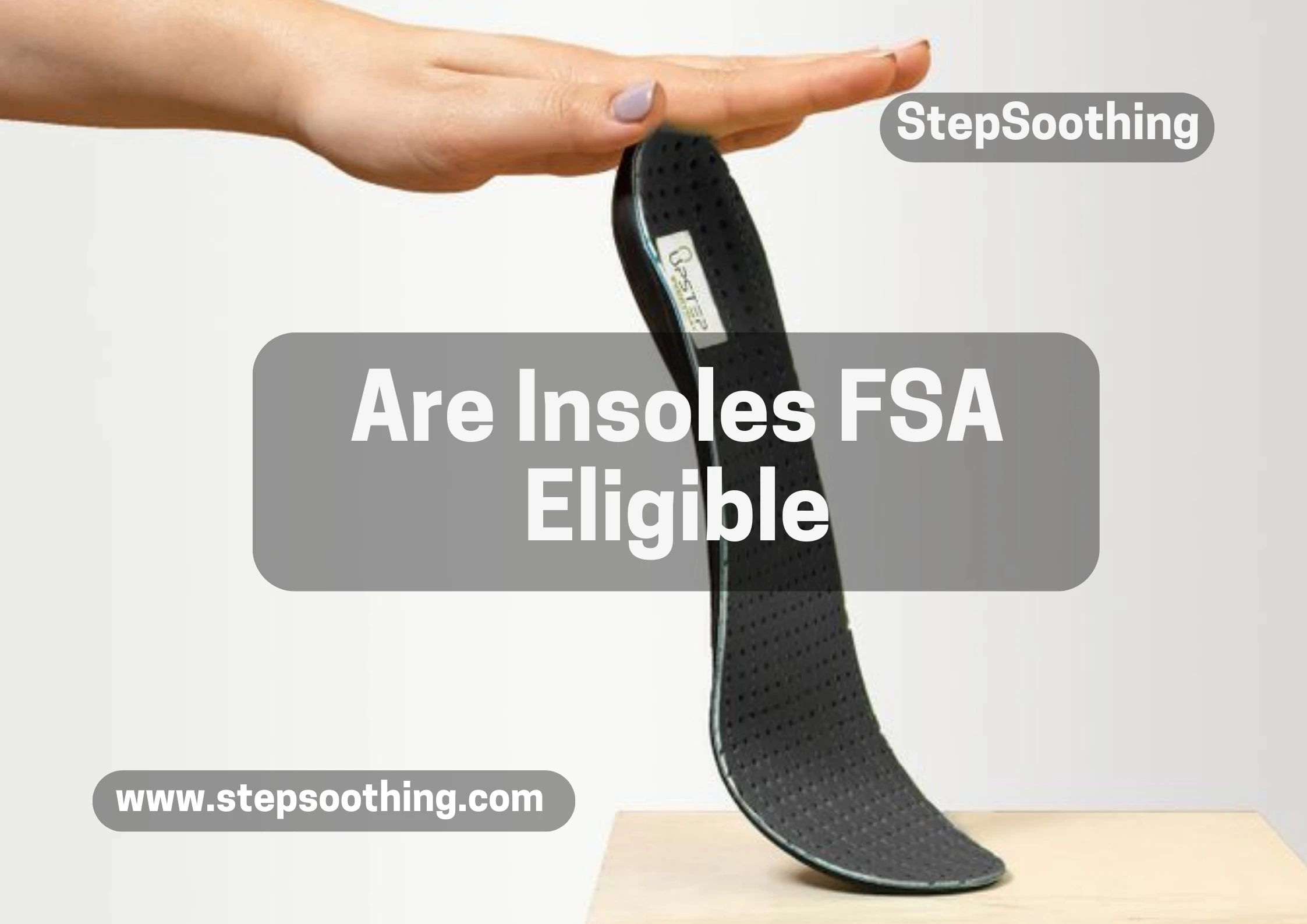In the daily grind of life, foot health often takes a backseat. However, if you experience foot pain or chronic conditions that impact mobility, investing in insoles can be a game-changer. But can you use Flexible Spending Accounts (FSA) to cover these costs? Let’s explore the eligibility of insoles under FSA and other related healthcare reimbursement programs.

Investing in Foot Health: The Role of Flexible Spending Accounts (FSA)
Understanding FSA, HSA, HRA, and LPFSA
A Flexible Spending Account (FSA) is a financial tool that allows individuals to set aside pre-tax income for qualified medical expenses, including certain foot cushioning products. Similar accounts include:
- Health Savings Account (HSA) – Available to those with high-deductible health plans and can be used for a broader range of medical expenses.
- Health Reimbursement Arrangement (HRA) – Employer-funded accounts for medical expenses, which may include custom orthotics and other foot health-related items.
- Limited-Purpose Flexible Spending Account (LPFSA) – Primarily for dental and vision but may cover some orthotic expenses if prescribed.
- Dependent Care Flexible Spending Account (DCFSA) – Not related to foot health but useful for dependent care expenses.
Are Insoles FSA Eligible?
The answer is yes, but with conditions. Insoles qualify as an FSA-eligible expense if they are deemed medically necessary. This means they must be prescribed by a podiatrist or other medical professional to treat a specific foot-related condition. If you experience acute or chronic medical issues, such as plantar fasciitis, arthritis, bone spurs, corns, calluses, or tendinitis, purchasing custom-made or over-the-counter orthotic insoles may be reimbursable under FSA.
Additionally, orthotic devices such as heel cups, shoe inserts, and footbeds that modify the structural and functional characteristics of the neuromuscular and skeletal system may also qualify.
Benefits of Using FSA for Insoles
1. Financial and Tax Advantages
- FSA funds are pre-tax, meaning you save money on healthcare expenses.
- Purchases made with an FSA reduce your taxable income, effectively lowering costs.
- Can be used for over-the-counter or custom-molded orthotic solutions, depending on medical necessity.
2. Improved Foot Health and Comfort
- Insoles help redistribute ground reaction forces, realign foot joints, and provide support while standing or walking.
- They alleviate pain caused by medical conditions and improve daily regular activity performance.
- May assist with mobility-related issues in cases of cerebral palsy, spinal cord injury, and other lower extremity conditions.
3. Access to High-Quality Products
- FSA funds can be used to purchase custom-made orthotics, heel cups, shoe inserts, and other orthotic devices.
- These externally applied devices are designed to correct foot alignment, enhance posture, and reduce pain.
Important Considerations
1. Medical Necessity and Prescription Requirement
To be eligible for reimbursement, insoles must be recommended by a medical professional. Custom orthotics, footbeds, or foot support devices designed for cerebral palsy, spinal cord injury, or extremity joint issues typically qualify.
2. FSA Contribution Limits
- The annual FSA contribution limit (as of current regulations) is $2,750 per employer.
- Plan contributions should be allocated wisely to cover various healthcare needs, including potential foot-related expenses.
3. Reimbursement and Documentation
- Keep all receipts, prescriptions, and medical documentation to ensure smooth reimbursement.
- Some plans allow grace periods or limited rollover amounts; check your plan’s rules.
- Always verify if your insoles fall under over-the-counter eligible expenses or require custom fitting by a podiatrist.
How to Purchase FSA-Eligible Insoles
1. Approved Retailers and Providers
- Many online and in-store retailers sell FSA-eligible orthotic products.
- Look for products labeled FSA-approved or check with your FSA administrator.
- Some insurance plans may also cover medical-grade orthotics under HRA or HSA arrangements.
2. Claim Submission and Reimbursement Process
- Some plans provide FSA debit cards for direct purchases.
- Others require submission of receipts, medical prescriptions, and claim forms for reimbursement.
- Be mindful of plan-year deadlines and ensure timely claim submissions to avoid loss of funds.
People Also Ask on FSA and Insoles
Can I buy insoles without a prescription?
A prescription is required for FSA reimbursement unless the insoles treat a diagnosed medical condition.
Do custom-made orthotics qualify under FSA?
Yes, if prescribed by a podiatrist or other medical professional.
Can I use FSA funds for over-the-counter shoe inserts?
Only if deemed medically necessary and supported by a prescription.
Are insoles covered under HSA or HRA?
Yes, Health Savings Accounts (HSA) and Health Reimbursement Arrangements (HRA) can also be used for orthotics, custom footbeds, and prescribed insoles.
Conclusion
Your foot health directly affects your overall well-being. If you suffer from foot pain due to potential medical conditions, investing in high-quality insoles is essential. With an FSA, HSA, or HRA, purchasing orthotics, footbeds, and custom shoe inserts becomes more financially manageable. Understanding eligibility requirements, reimbursement processes, and documentation needs ensures that you maximize your FSA benefits effectively.



